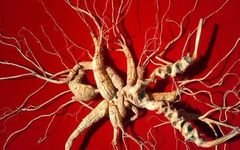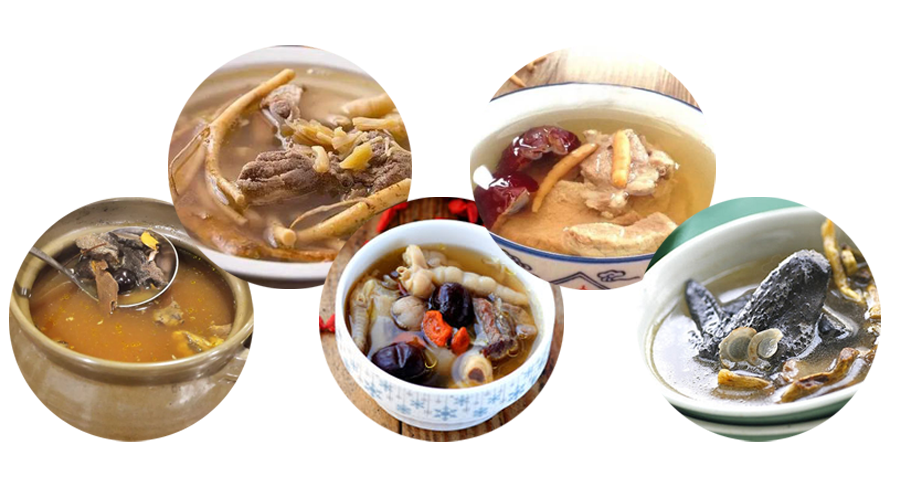 Guangdong people are famous for their diverse soup recipes, and when it comes to nourishment, various types of ginseng are commonly used.
Guangdong people are famous for their diverse soup recipes, and when it comes to nourishment, various types of ginseng are commonly used.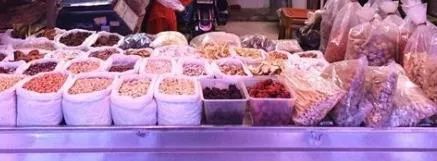 In herbal shops and soup ingredient stores, you can find a wide variety of ginseng such as Red Ginseng (Hong Shen), American Ginseng (Xi Yang Shen), Codonopsis (Dang Shen), Chinese Wild Ginseng (Shan Shen), and Sand Ginseng (Sha Shen). For those who find it difficult to choose, they might buy randomly or consult the shopkeeper. So, how should one choose among these various types of ginseng? Is it enough to just buy any of them for nourishment? Certainly not. If you patiently read through this article, you will know how to select the right ginseng for yourself next time.Since ancient times, ginseng has been known for its ability to replenish vital energy. So, let’s take a look at what ginseng really is.
In herbal shops and soup ingredient stores, you can find a wide variety of ginseng such as Red Ginseng (Hong Shen), American Ginseng (Xi Yang Shen), Codonopsis (Dang Shen), Chinese Wild Ginseng (Shan Shen), and Sand Ginseng (Sha Shen). For those who find it difficult to choose, they might buy randomly or consult the shopkeeper. So, how should one choose among these various types of ginseng? Is it enough to just buy any of them for nourishment? Certainly not. If you patiently read through this article, you will know how to select the right ginseng for yourself next time.Since ancient times, ginseng has been known for its ability to replenish vital energy. So, let’s take a look at what ginseng really is.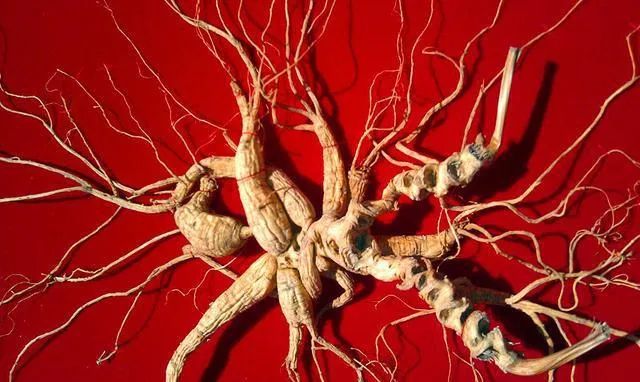 First, let’s identify the true and false brothers.Ginseng (Ren Shen) is the dried root of the perennial herbaceous plant of the Araliaceae family, while American Ginseng (Xi Yang Shen) is the root of the perennial herbaceous plant of the same family. Codonopsis (Dang Shen) is the root of the perennial herbaceous plant of the Campanulaceae family, which includes both Codonopsis pilosula (Su Hua Dang Shen) and Codonopsis tangshen (Chuan Dang Shen). Chinese Wild Ginseng (Tai Zi Shen) is the tuber of the perennial herbaceous plant of the Caryophyllaceae family, and Sand Ginseng (Sha Shen) is the root of the perennial herbaceous plant of the Apiaceae family. It can be seen that ginseng and American ginseng are blood-related brothers, while Codonopsis, Chinese Wild Ginseng, and Sand Ginseng are adopted brothers.
First, let’s identify the true and false brothers.Ginseng (Ren Shen) is the dried root of the perennial herbaceous plant of the Araliaceae family, while American Ginseng (Xi Yang Shen) is the root of the perennial herbaceous plant of the same family. Codonopsis (Dang Shen) is the root of the perennial herbaceous plant of the Campanulaceae family, which includes both Codonopsis pilosula (Su Hua Dang Shen) and Codonopsis tangshen (Chuan Dang Shen). Chinese Wild Ginseng (Tai Zi Shen) is the tuber of the perennial herbaceous plant of the Caryophyllaceae family, and Sand Ginseng (Sha Shen) is the root of the perennial herbaceous plant of the Apiaceae family. It can be seen that ginseng and American ginseng are blood-related brothers, while Codonopsis, Chinese Wild Ginseng, and Sand Ginseng are adopted brothers.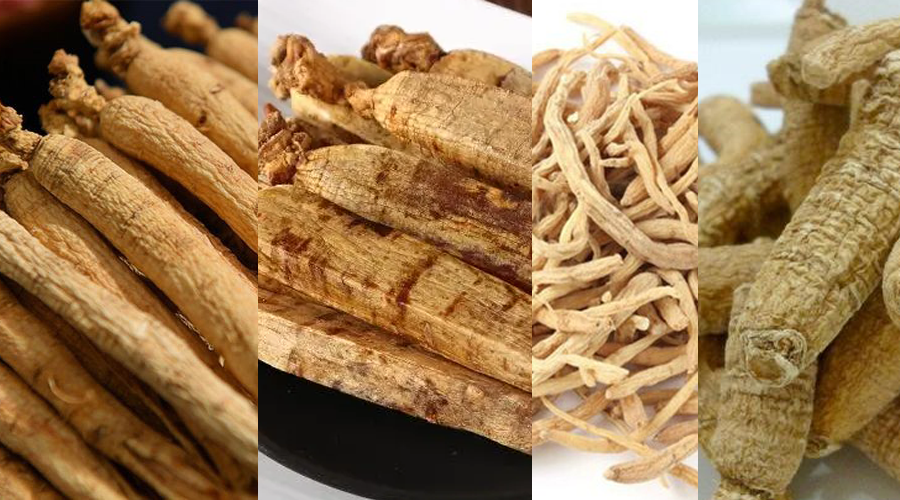 First, let’s take a look at the legitimate ginseng.Ginseng is mainly produced in Northeast China, Japan, and Korea, with the Korean ginseng being the one most commonly seen, known as Korean Ginseng (Gao Li Shen). Depending on the growing environment, it can be divided into wild ginseng and cultivated ginseng. The ginseng found in pharmacies is mostly cultivated ginseng, which is artificially grown to simulate the natural growing conditions of ginseng. Wild ginseng is relatively rare.Ginseng can also be classified based on different processing methods into Raw Sun-Dried Ginseng (Sheng Shai Shen), Red Ginseng (Hong Shen), White Ginseng (Bai Shen), Edge Red Ginseng (Bian Tiao Shen), and Ginseng Hair (Shen Xu).Raw Sun-Dried Ginseng is made by cutting off the small branches of fresh ginseng, fumigating it with sulfur, and then sun-drying it. The small roots that are cut off are dried to produce the commonly seen Ginseng Hair.
First, let’s take a look at the legitimate ginseng.Ginseng is mainly produced in Northeast China, Japan, and Korea, with the Korean ginseng being the one most commonly seen, known as Korean Ginseng (Gao Li Shen). Depending on the growing environment, it can be divided into wild ginseng and cultivated ginseng. The ginseng found in pharmacies is mostly cultivated ginseng, which is artificially grown to simulate the natural growing conditions of ginseng. Wild ginseng is relatively rare.Ginseng can also be classified based on different processing methods into Raw Sun-Dried Ginseng (Sheng Shai Shen), Red Ginseng (Hong Shen), White Ginseng (Bai Shen), Edge Red Ginseng (Bian Tiao Shen), and Ginseng Hair (Shen Xu).Raw Sun-Dried Ginseng is made by cutting off the small branches of fresh ginseng, fumigating it with sulfur, and then sun-drying it. The small roots that are cut off are dried to produce the commonly seen Ginseng Hair.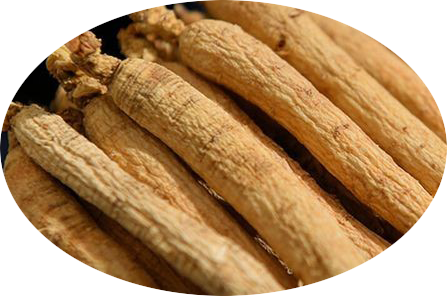 Red Ginseng is made by cutting off the small branches of fresh ginseng, washing it clean, and steaming it for 2-3 hours until the ginseng root turns yellow and the skin becomes semi-transparent, then it is dried. The ones with longer side roots are called Edge Red Ginseng. The cut-off roots are processed in the same way as Red Ginseng to produce Red Ginseng Hair.
Red Ginseng is made by cutting off the small branches of fresh ginseng, washing it clean, and steaming it for 2-3 hours until the ginseng root turns yellow and the skin becomes semi-transparent, then it is dried. The ones with longer side roots are called Edge Red Ginseng. The cut-off roots are processed in the same way as Red Ginseng to produce Red Ginseng Hair.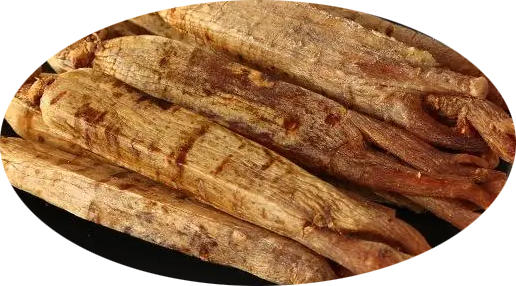 White Ginseng or Sugar Ginseng is made by washing fresh ginseng, blanching it, soaking it in sugar, and then drying it.In terms of efficacy, all types of ginseng are excellent for replenishing qi, but due to different processing methods, their medicinal properties vary. Raw Sun-Dried Ginseng and White Ginseng are cooler in nature and are often used for those with qi and yin deficiency. Red Ginseng, after processing, is warmer in nature and suitable for those with qi deficiency and yang weakness. The medicinal properties of Ginseng Hair are consistent with those of ginseng processed in the same way, but its nourishing power is weaker, suitable for those with mild qi deficiency or those with weak spleen and stomach who cannot tolerate strong tonics.Next, let’s look at the ginseng’s cousin: American Ginseng (Xi Yang Shen). The processing method for American Ginseng is relatively simple. After harvesting, it is cleaned and dried with the skin intact, known as Original Skin American Ginseng; or it can be moistened, the skin removed, and then sulfur-fumigated and dried, resulting in a white powdery appearance, known as Powdered American Ginseng. Their flavors and properties are the same. American Ginseng is sweet, slightly bitter, and cold, mainly used to replenish qi, nourish yin, clear heat, and generate fluids.Finally, let’s look at a few adopted brothers in the ginseng family.
White Ginseng or Sugar Ginseng is made by washing fresh ginseng, blanching it, soaking it in sugar, and then drying it.In terms of efficacy, all types of ginseng are excellent for replenishing qi, but due to different processing methods, their medicinal properties vary. Raw Sun-Dried Ginseng and White Ginseng are cooler in nature and are often used for those with qi and yin deficiency. Red Ginseng, after processing, is warmer in nature and suitable for those with qi deficiency and yang weakness. The medicinal properties of Ginseng Hair are consistent with those of ginseng processed in the same way, but its nourishing power is weaker, suitable for those with mild qi deficiency or those with weak spleen and stomach who cannot tolerate strong tonics.Next, let’s look at the ginseng’s cousin: American Ginseng (Xi Yang Shen). The processing method for American Ginseng is relatively simple. After harvesting, it is cleaned and dried with the skin intact, known as Original Skin American Ginseng; or it can be moistened, the skin removed, and then sulfur-fumigated and dried, resulting in a white powdery appearance, known as Powdered American Ginseng. Their flavors and properties are the same. American Ginseng is sweet, slightly bitter, and cold, mainly used to replenish qi, nourish yin, clear heat, and generate fluids.Finally, let’s look at a few adopted brothers in the ginseng family.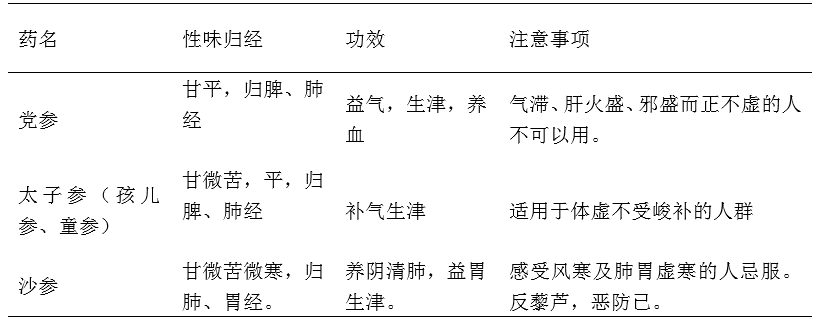 As can be seen from the above, all types of ginseng have nourishing effects, but their medicinal properties differ. Here’s a summary:For those with yang deficiency who are afraid of cold, feeling fatigued and weak, they can choose Red Ginseng or Codonopsis; for those with qi and yin deficiency, experiencing five heart heat, night sweats, red tongue with little coating, and thin pulse, they can choose Raw Sun-Dried Ginseng, White Ginseng, Chinese Wild Ginseng, or Sand Ginseng. For those with qi and blood deficiency, pale complexion, shortness of breath, and thin pulse, they can choose Codonopsis.For those who are weak and cannot tolerate ginseng, they can try Substitute Ginseng Paste (Dai Shen Gao). Substitute Ginseng Paste comes from Wang Mengying’s “Dietary Recipes of Suixi Ju” and its main ingredients are 1 tael of fresh longan meat, 1 tael of white sugar, and 1 qian of American Ginseng. These are steamed together until it becomes a paste, taken 1 tablespoon on an empty stomach each day. The traditional method is too complicated, and since fresh longan meat is seasonal, I use 50 grams of longan meat, 6 grams of American Ginseng, ground into fine powder, mixed with 50 grams of powdered white sugar, and steamed until it becomes a paste, stored in a sealed bottle. Take 1 tablespoon in the morning with warm water. Once a day.Substitute Ginseng Paste has the nourishing effects of ginseng without the warming and drying drawbacks. It is suitable for those with both qi and yin deficiency but not suitable for those with diabetes or those with spleen deficiency and dampness.Want to know your body constitution?Want to understand your health status?Want to know how to adjust your health?Want to know what soups are suitable for you?We have a professional teamFrom Monday to Friday afternoons, Room 507,TCM Sub-health Comprehensive Adjustment ClinicYou can make an appointment through the hospital’s WeChat public account, registration phone, or directly in the clinic.Written by: Qi YudeEdited by: Huang ChangjinInitial Review: Liang TianshanFinal Review: Wu Yanhua Note: Image sources are from the internet, used here only for health education purposes. If there is any infringement, please inform us for deletion.
As can be seen from the above, all types of ginseng have nourishing effects, but their medicinal properties differ. Here’s a summary:For those with yang deficiency who are afraid of cold, feeling fatigued and weak, they can choose Red Ginseng or Codonopsis; for those with qi and yin deficiency, experiencing five heart heat, night sweats, red tongue with little coating, and thin pulse, they can choose Raw Sun-Dried Ginseng, White Ginseng, Chinese Wild Ginseng, or Sand Ginseng. For those with qi and blood deficiency, pale complexion, shortness of breath, and thin pulse, they can choose Codonopsis.For those who are weak and cannot tolerate ginseng, they can try Substitute Ginseng Paste (Dai Shen Gao). Substitute Ginseng Paste comes from Wang Mengying’s “Dietary Recipes of Suixi Ju” and its main ingredients are 1 tael of fresh longan meat, 1 tael of white sugar, and 1 qian of American Ginseng. These are steamed together until it becomes a paste, taken 1 tablespoon on an empty stomach each day. The traditional method is too complicated, and since fresh longan meat is seasonal, I use 50 grams of longan meat, 6 grams of American Ginseng, ground into fine powder, mixed with 50 grams of powdered white sugar, and steamed until it becomes a paste, stored in a sealed bottle. Take 1 tablespoon in the morning with warm water. Once a day.Substitute Ginseng Paste has the nourishing effects of ginseng without the warming and drying drawbacks. It is suitable for those with both qi and yin deficiency but not suitable for those with diabetes or those with spleen deficiency and dampness.Want to know your body constitution?Want to understand your health status?Want to know how to adjust your health?Want to know what soups are suitable for you?We have a professional teamFrom Monday to Friday afternoons, Room 507,TCM Sub-health Comprehensive Adjustment ClinicYou can make an appointment through the hospital’s WeChat public account, registration phone, or directly in the clinic.Written by: Qi YudeEdited by: Huang ChangjinInitial Review: Liang TianshanFinal Review: Wu Yanhua Note: Image sources are from the internet, used here only for health education purposes. If there is any infringement, please inform us for deletion.
